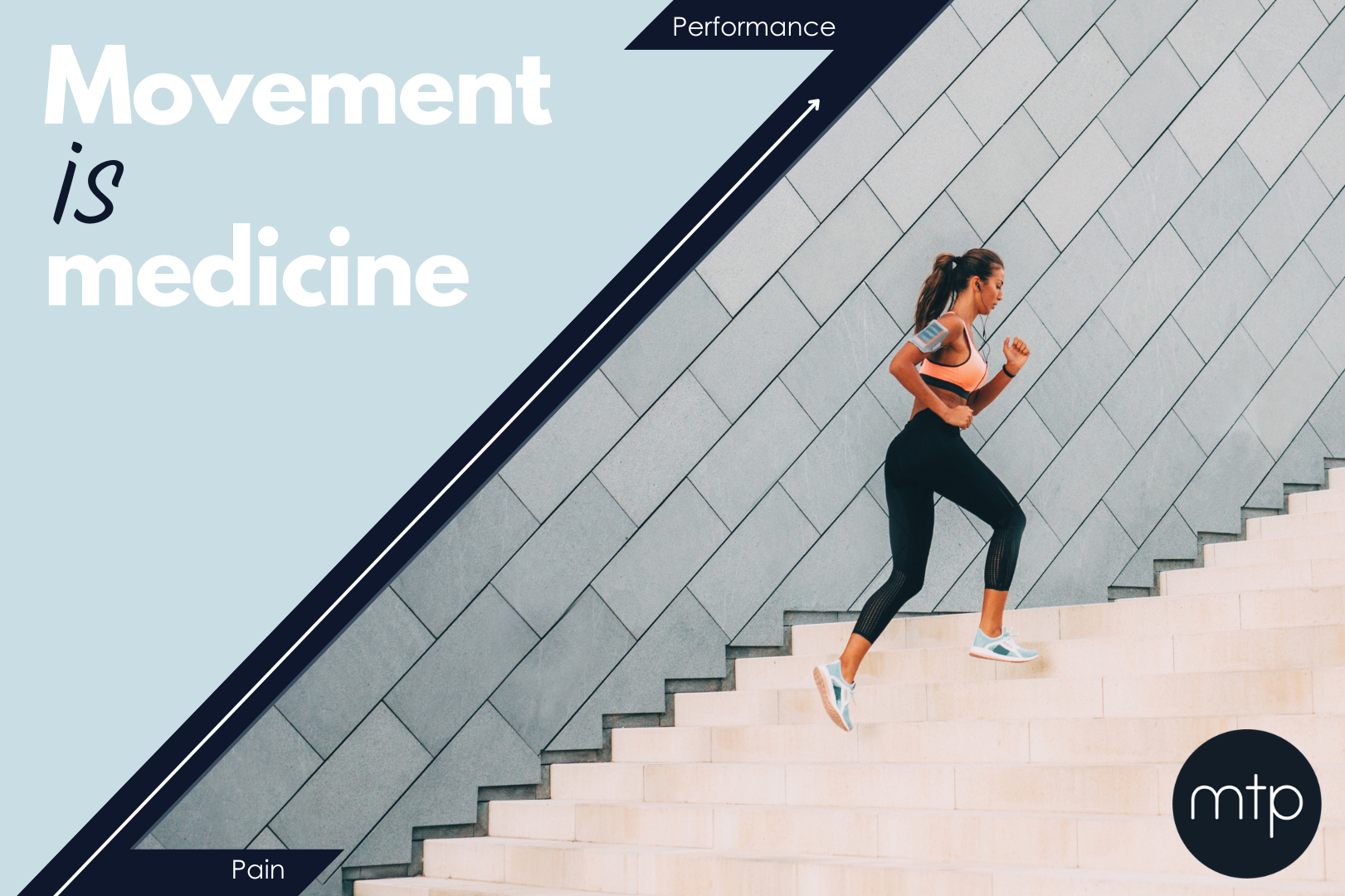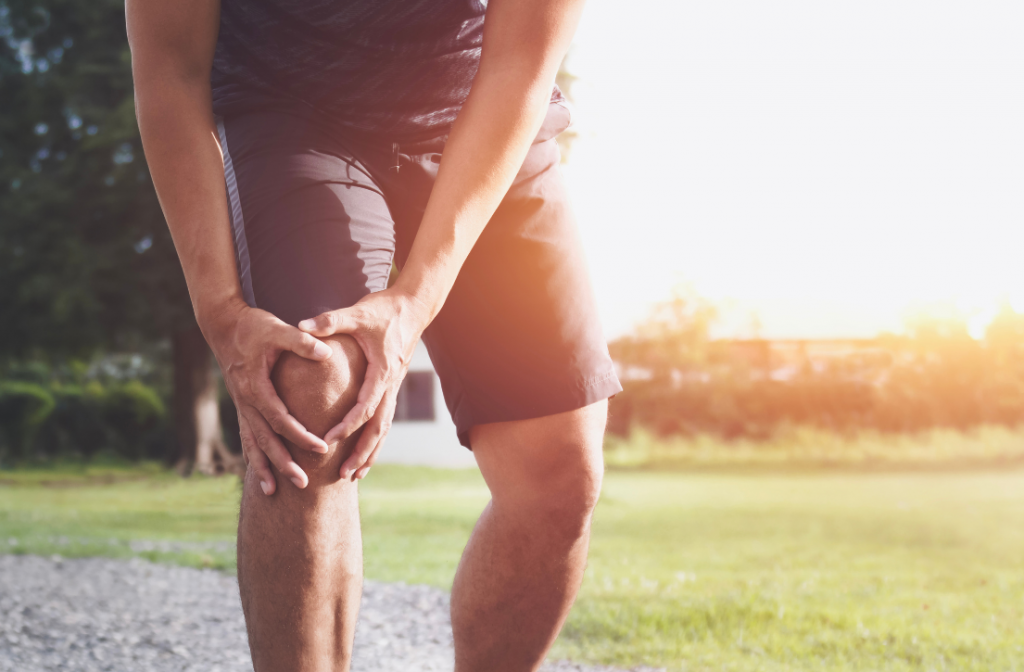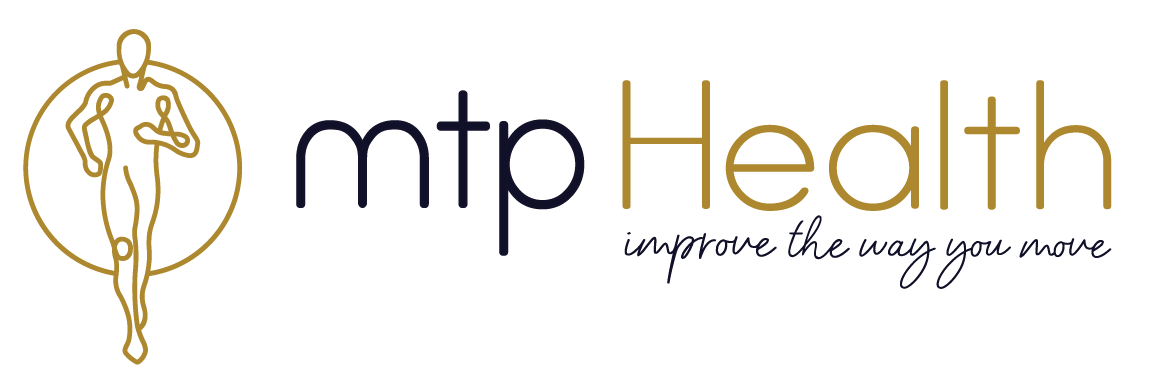Movement is medicine for knee pain
Any pain in our bodies can make us feel like stopping movements that hurt. It seems logical to stop doing something that hurts but this isn’t always the answer, particularly for knee pain. This may sound counterintuitive but to understand that saying ‘movement is medicine’, we need to start with what movement does for our bodies.

Why should we move?
Movement can be anything from moving around your house and completing daily tasks such as walking to the shop or gardening, to exercising on a bike, going for a hike or working out at the gym or with a clinical physician. Anything that gets you up from the desk or your couch is movement and it is good.
When we move, our body responds and adapts which helps us improve our ability to move in the future. Our body also responds when we don’t move except instead of being able to move better, we slowly start to decrease our capacity for movement. In simple terms, use it or lose it.
This simple law of adaptation is commonly known as the SAID principle: when we expose ourselves to stress (in this case, in the form of exercise), our bodies make adaptation to allow us to better withstand that type of stress in the future. For example, if you start walking to your shops once a day rather than driving, although it may seem hard at first, your body will adapt to this activity and you will notice it becoming easier and your ability to walk further will increase. The more you take the stairs rather than the lift, the easier your body will find the stairs, although it may not always feel like it! In layman’s terms, there is virtually no situation where exercise does not lead to an improvement in the health outcomes of a certain treatment, including knee pain.
What are the benefits of movement for knee pain?
Knee pain and dysfunction can have a huge impact on our lives. You may find yourself making decisions based on your knee pain, out of concern for the impact activities have on your knees or because you don’t want to be a burden or hold others back. While it can be easy to justify these types of avoidant behaviours, they can quickly have a profound impact on your confidence and quality of life.
This is where movement and exercise can play a vital role in managing knee pain and reversing the effects of avoidant behaviours. Movement can improve knee function and reduce pain through several physiological mechanisms including:


- increased blood flow
- increased muscle strength
- increased joint range of motion
- improved proprioception and balance
- improved cardiovascular fitness.
These benefits are all quite technical but in day-to-day life they mean you can:
- easily move about
- reduce your fall risk
- decrease your body weight
- improve your psychological state and mental health
- decrease metabolic abnormalities
- stop your knees from limiting what you want to do.
What movement should you do?
The type of exercise that can help you manage your knee pain and improve your ability to do the things you want to do involves a combination of:
- movement re-training
- muscle strengthening
- balance
- flexibility
- cardiovascular training.
It is important to do this movement in a safe, controlled and systematic way where you can challenge your control and strength. This allows you to build strength in movement and tolerate move activity without flaring up your knee pain.
You also need to approach your movement journey with a progress approach where you can learn to move in new and sometimes challenging ways. This approach is vital because you cannot do the same thing over and over and expect a different result.
This can sound a little daunting but that is where the team at MTP Health can help you start moving and set you up to complete the exercises you need in a setting that suits you.
How should you progress your movement?
Progressing your movement is another aspect that can seem daunting until you realise that we have already designed a progressive approach to your movement and knee pain journey:
- We start by improving your movement awareness and understanding of initiating movements such as stepping, squatting, lunging, bending and turning – all movements that you want to be able to complete day-to-day without thinking.
- Once you understand the best way to create stability in movements, it is important to improve muscular control around your knees and the joints above and below.
- Next, we want to build your muscular strength and endurance within a pain-free range of motion.
- Then, we focus on improving your range of motion so you can start increasing your mobility.
- By this stage, we have created a stable, controlled and mobile base on which we can begin improving control and strength in low stability conditions e.g. single leg exercises or unstable surfaces.
- Finally, by increase your overall strength and power, you will be ready to tackle many of the activities you may not have previous felt were possible.
From here, the next steps will be guided by what your goals are, what is reasonably possible for your and what will give you the best outcomes for your knees and your quality of life:
- We may want to work on improving your ability to absorb impact e.g. jumping, landing and hoping.
- Our focus may need to be on improving your cardiovascular fitness or on weight management.
Should movement always be hard work?
Absolutely not! Your overall journey to build your strength and control back to where you can achieve your goals and get the most out of life is going to take a little effort. However, those short or easy days are very important, even if you feel like you completed your movement or exercises quite easily. Days like this add a significant amount of activity time to your week with relatively low impact – you will still see benefits and adaptations from this sort of exercise but you know you won’t be overworking your knees.
The good thing is your clinician will add more to your program as you progress and explain which days are harder and which days you should take it easy. This allows you build a long-term management approach for life.
Should you avoid knee pain?

Knee pain can be triggered by:
- challenging movements and activities
- stairs, hills, squatting, kneeling, running, jumping etc.
- prolonged sitting or standing
- sudden, fast movement
- large range movements e.g. bending or straightening fully
- twisting and turning or side to side movements.
We all try to avoid things that cause us pain but often this leads to us doing less or stopping activities all together. For knee pain, this will not solve the problem. In fact, it often makes it worse!
By avoiding the pain, you are usually reducing activity from your day-to-day routine. A common path of avoidance goes like this:
- Prior to experiencing symptoms, you played tennis and jogged regularly.
- Then, the pain and swelling you experienced playing tennis was having too big an impact on your knee pain, so you stopped playing but jogging was still fine.
- You have taken tennis out of your schedule and you seem better off but then you start to get sore after jogging.
- You decide to jog less as you think you’ve just been overdoing it.
- This helps temporarily but the soreness escalates again, so you stop jogging all together.
- You have now removed a large proportion of movement from your weekly routine and you find your strength and fitness goes down. You even begin to gain a little weight.
- Now the stairs you used to take without thinking are making you sore, so you reduce the number of stairs you take.
- Playing with the kids and grandkids at the park is also making you sore, so you spend more time watching than playing.
- The pain is starting to become constant now, so you decide to speak with your doctor or surgeon…maybe you need a joint replacement?!
This is an all too common storyline with knee pain. The primary issue is not that the knee pain has progressed but that your strength, control and fitness have regressed. As a result, things that used to be physically easy are now too much of a challenge. This is exactly what we want to avoid and fix with movement.
Why do we want you to know about this?
Education has been shown to be a cornerstone element of helping people with knee pain reduce it and create lasting, positive change. There is no one size fits all approach, you have your own unique life circumstances that impact on how you progress with your knee function. This is where the team at MTP Health wants to jump in to understand your specific situation, educate you on how to improve things and guide you on your movement journey.

